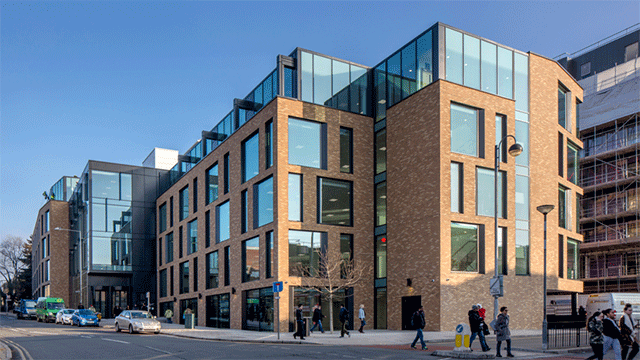COMMENT This year has seen social value come to the fore for the office sector. Just as high environmental sustainability standards have become a prerequisite for occupiers and investors, the impact of a building on its surrounding community is becoming a priority.
As our cities recover from the coronavirus pandemic, office development is encountering communities like never before, and the centre of gravity for the workspace sector is shifting away from central business districts.
Earlier this year, the City of London announced plans to convert empty offices into housing, with an ambition to create an “ecosystem that remains attractive to workers, visitors, learners and residents”. Meanwhile, some of the major REITs have moved south of the Thames, recognising the merit in providing workspace close to office workers’ homes, with areas such as Vauxhall and Elephant & Castle being promoted as new office destinations.
Bustling in Brixton
This movement away from city centres makes social value a crucial priority in office development: when you develop offices on people’s doorsteps, and as homes crop up adjacent to your office, that ‘S’ in your ESG strategy becomes a “must have”, rather than a “nice to have”.
Neighbourhood working is something we have experienced first-hand at Squire & Partners. We moved our 200-plus staff from King’s Cross to Brixton in 2017, and recently launched our own flexible workspace, The Department Store Studios, next door to our HQ (pictured below). Though known predominantly as a vibrant residential neighbourhood, Brixton makes complete sense for an office location, with its buzzing creative community, pioneering food scene and easy access to central London via the Victoria line.
Since we arrived, Derwent purchased Blue Star House, the 1960s block adjacent to us, with plans to redevelop, while Soho House Group opened one of its Studio Spaces up the road. However, the rise of Brixton as a workspace destination has not been without controversy. There has been widely reported local opposition to Hondo Enterprises’ plans to develop an office tower over the historic markets, for example. The local community, like many communities, is suspicious of property developers, and is eager to protect its unique character and heritage from a perceived threat.
Our experience tells us that it’s entirely possible for office development to deliver social value, and to contribute positively to a local community, so long as the ambition is embedded from the very start of a project. It must be a long-term commitment, rather than a box-ticking exercise to get through the planning process.

Listening to the locals
What social value looks like in office development will vary from location to location. Each area will have its own distinct community and culture, so creating social value is not a one-size-fits-all approach. Understanding the nuances of where you are operating is key to success.
For us, this meant creating an early open dialogue with the community in Brixton to find out exactly what they needed. We lent our design skills to realise community projects such as the Brixton Windmill Education Centre, supported local organisations and initiated regular creative collaborations with local schools. We regularly host publicly accessible events and are active members of the business improvement district. At The Department Store Studios, we established an annual residency programme offering free workspace and mentoring to two local creative entrepreneurs.
All of this comes with a serious financial commitment, but we see it as a valuable investment rather than a sunk cost. Just as developers can no longer get away with greenwashing, a superficial approach to social value will not fly with local communities, local authorities and, crucially, tenants who are increasingly demanding workspaces that deliver across all areas of ESG.
Michael Squire is founding partner at Squire & Partners











